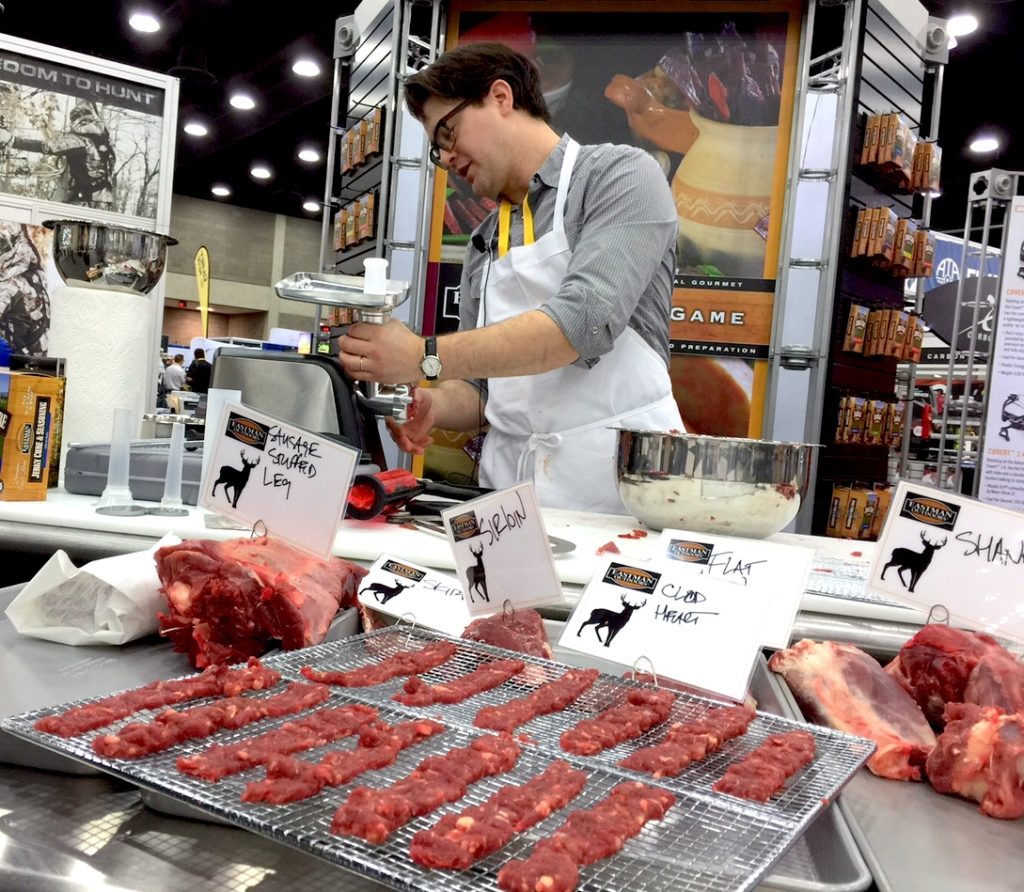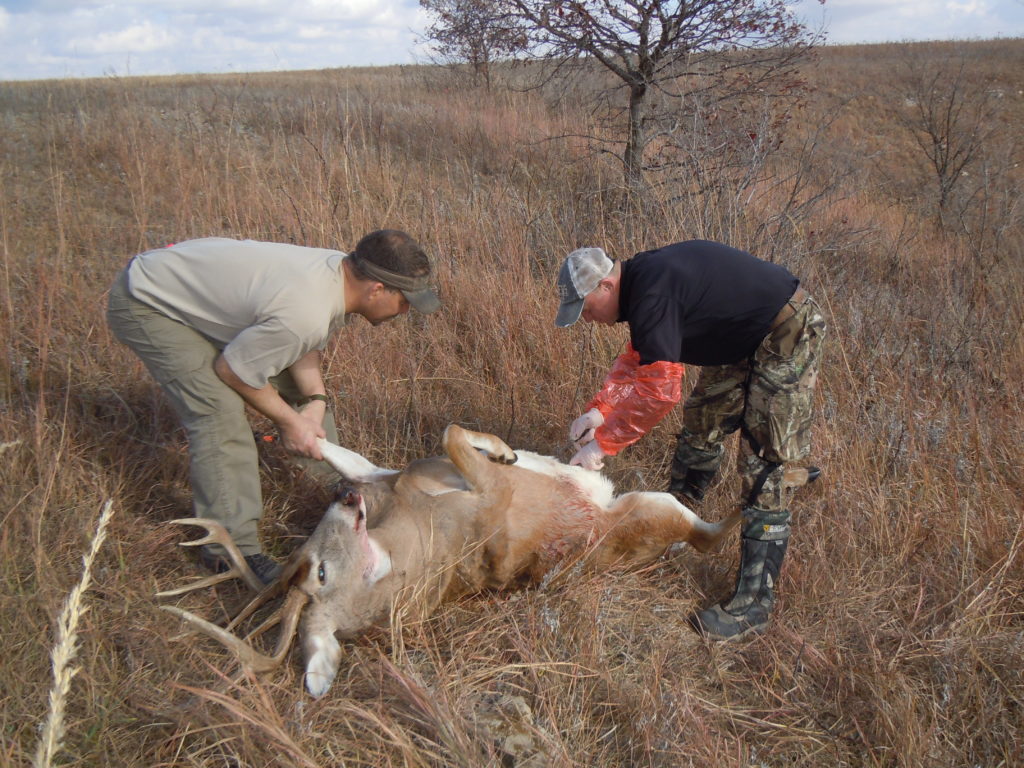The age of an animal impacts meat flavor more than it influences tenderness. An older animal moves more over time, which creates more blood circulation and it’s that circulation that creates flavor compounds, making older meat more flavorful.
This dandy, along with other facts about meat science, is what intrigues and energizes celebrated butcher Rob Levitt. The Chicago-based butcher once hosted demonstrations on behalf of Eastman Outdoors at the ATA Trade Show. What’s different about Levitt’s approach is his creative application of butchering. He’s dedicated to using venison in diverse ways that doesn’t limit the hunter to a bunch of ground meat. He’s also resourceful, using meat cuts many hunters discard.
So what could Levitt teach a hunter about meat that the hunter doesn’t already know? Well, you might be surprised.

It's not uncommon for butcher Rob Levitt to butcher wild game for local hunters at his shop in downtown Chicago. Photo: Amy Hatfield
On Age and Flavor:
Earlier we noted that the accrued blood circulation in older animals created more flavor compounds. It's also why older cuts of meat are darker.
In a story assessing the correlation between the age of a domestic animal and meat favor, Modern Farmer makes the case for eating older animals. The article cites an excerpt from the book, Butchering, by Adam Danforth. In it, Danforth suggests people are so hyper-focused on the tenderness of their meats, they’ve neglected to consider optimum flavor.
“’The components of flavor are in the life of the animal and the work that it does. The longer an animal lives and the more work it does, the more flavorful its meat becomes,’ says Danforth. He is an advocate for eating older, “cull” animals, for which there is currently little to no market.
Danforth also makes the case that the “tough old bird,” gets a bad rap. Yes, the meat is tough, but the meat from an old hen retired from laying is the best meat you can get your hands on. The flavor is far superior to that of a younger hen still in it’s prime.
On Exercise and Muscles:

An active, wild animal’s meat is likely tougher than a farm-raised animal's, but wild game is also packed with more flavor compounds than what you'll find in a farm-raise animal. Photo: Mark Kayser
They type of muscle matters and the amount the muscle is exercised impacts the meat’s toughness," said Levitt. "While exercise increases circulation and, as a result boosts flavor, it also strengthens muscles making them tougher."
So an active, wild animal’s meat is likely tougher than a less active, farm-raised animal's meat, but it’s also packed with more flavor compounds.
On Tender Meat:
Levitt says it's that accrued circulation in older animals that also causes older cuts of meat to appear darker. And according to Fine Cooking, tougher cuts often, “have a lot of connective tissue and come from a heavily exercised muscle. Exercise increases the amount of connective tissue within the muscles, making them tougher. Tender cuts are those that have very little connective tissue and come from a little-used muscle.”






